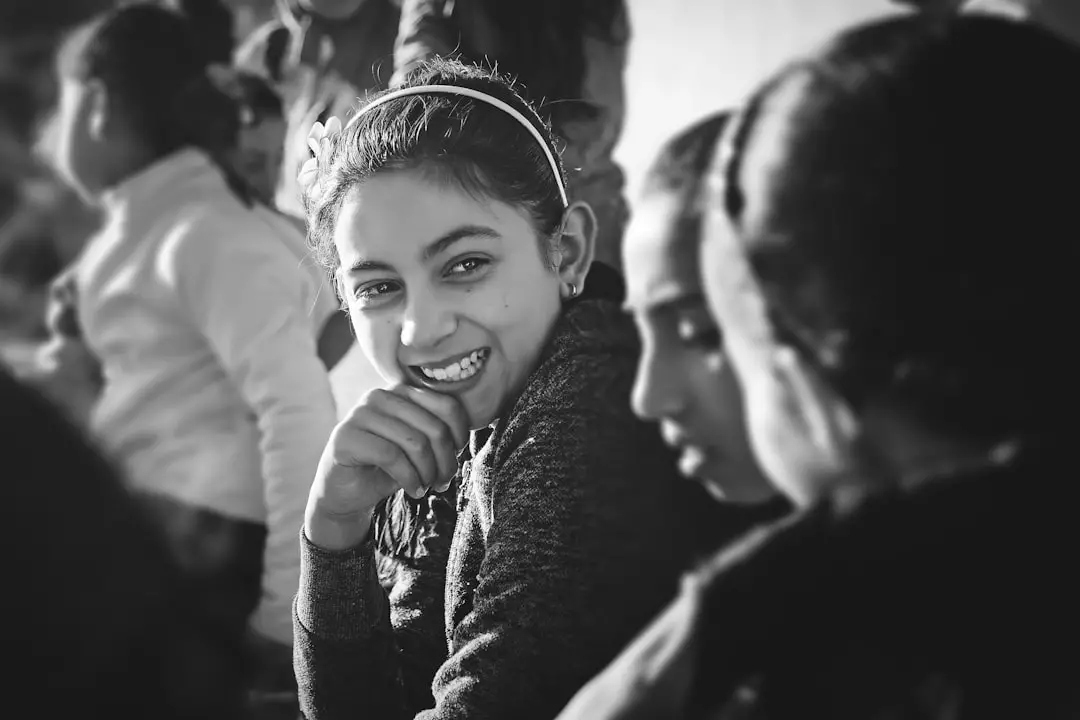Morocco, a country located at the crossroads of Europe and Africa, boasts a diverse climate that varies significantly across its regions. The geographical features of Morocco, including the Atlas Mountains, the Sahara Desert, and the Mediterranean coastline, contribute to this climatic diversity. The northern regions experience a Mediterranean climate characterized by mild, wet winters and hot, dry summers.
In contrast, the interior and southern areas are dominated by a more arid climate, with extreme temperature variations between day and night. The coastal areas enjoy a temperate climate, making them attractive for beachgoers and those seeking a milder atmosphere. Understanding Morocco’s climate is essential for travelers looking to explore its rich culture and stunning landscapes.
The best time to visit can depend on the specific regions one intends to explore, as well as the activities planned. For instance, while the coastal cities like Casablanca and Essaouira may be pleasant in spring and fall, the interior cities such as Marrakech and Fes can be sweltering in summer. This article will delve into the seasonal variations in Morocco’s climate, providing insights into the best times to visit and what travelers can expect throughout the year.
Key Takeaways
- Morocco has a diverse climate, with Mediterranean, Atlantic, and desert influences, resulting in varying weather patterns throughout the year.
- Spring is the best time to visit Morocco, with pleasant temperatures, blooming landscapes, and vibrant festivals such as the Rose Festival in the Dades Valley.
- Summer in Morocco can be hot, but it’s a great time to visit the coastal areas for beach activities and water sports, although the interior can be scorching.
- Fall is a popular season for tourists in Morocco, with comfortable temperatures, cultural events like the Date Festival in Erfoud, and the beginning of the harvest season.
- Winter in Morocco offers unique activities such as skiing in the Atlas Mountains, exploring the Sahara Desert, and experiencing the festive atmosphere of the Christmas and New Year celebrations.
Spring: The Best Time to Visit Morocco
Spring in Morocco, typically spanning from March to May, is often heralded as the ideal season for travel. During this time, temperatures are generally mild, making it comfortable for outdoor exploration. Cities like Marrakech and Fes experience daytime temperatures ranging from 20°C to 25°C (68°F to 77°F), while evenings can be cooler, necessitating a light jacket.
The blooming wildflowers and lush greenery that blanket the countryside during spring add to the allure of this season, creating picturesque landscapes that are perfect for photography enthusiasts. Moreover, spring is an excellent time for cultural experiences in Morocco. Many festivals and events take place during this season, allowing visitors to immerse themselves in local traditions.
For instance, the Marrakech Popular Arts Festival showcases traditional Moroccan music, dance, and crafts, providing a vibrant atmosphere that celebrates the country’s rich heritage. Additionally, spring is an ideal time for hiking in the Atlas Mountains, where trails are accessible and the scenery is breathtakingly beautiful. The combination of pleasant weather and cultural vibrancy makes spring a prime time for travelers seeking both adventure and cultural enrichment.
Summer: Pros and Cons of Traveling to Morocco

Summer in Morocco, which lasts from June to August, brings with it intense heat, particularly in the interior regions. Cities like Marrakech can see temperatures soar above 40°C (104°F), making outdoor activities challenging during the peak hours of the day. However, this season also has its advantages.
Coastal cities such as Agadir and Essaouira offer a refreshing escape from the heat, with cooler temperatures and breezy conditions that attract beachgoers. The Atlantic coast becomes a hub for water sports enthusiasts, with opportunities for surfing, windsurfing, and kitesurfing. Traveling during summer also means experiencing Morocco’s vibrant nightlife and bustling markets.
Many locals take to the streets in the evenings when temperatures drop, creating a lively atmosphere filled with street performers, food stalls, and music. However, travelers should be prepared for the heat by planning their activities accordingly—early morning excursions or late afternoon explorations can help avoid the sweltering midday sun. Additionally, summer is a popular time for tourists, which can lead to crowded attractions and higher prices for accommodations.
Despite these challenges, summer offers unique experiences that can be rewarding for those willing to adapt to the heat.
Fall: A Popular Season for Tourists
| Month | Number of Tourists |
|---|---|
| September | 500,000 |
| October | 700,000 |
| November | 600,000 |
As summer transitions into fall from September to November, Morocco experiences a shift in weather that many travelers find appealing. Temperatures begin to cool down significantly, particularly in the interior regions where daytime highs range from 25°C to 30°C (77°F to 86°F). This makes fall an excellent time for exploring cities like Marrakech and Fes without the oppressive heat of summer.
The pleasant weather encourages outdoor activities such as hiking in the Atlas Mountains or exploring the Sahara Desert. Fall is also marked by a series of cultural events that attract tourists from around the world. The Fes Festival of World Sacred Music is one such event that celebrates spiritual music from various cultures, drawing artists and audiences alike.
This festival not only showcases Morocco’s rich musical heritage but also promotes intercultural dialogue through art. Additionally, fall is harvest season in many regions of Morocco, providing opportunities for visitors to experience local agricultural practices and taste seasonal produce at markets. The combination of favorable weather and cultural richness makes fall a popular choice for travelers seeking an immersive experience.
Winter: Experience Morocco’s Unique Winter Activities
Winter in Morocco spans from December to February and presents a unique opportunity for travelers to experience a different side of the country. While coastal areas remain relatively mild with temperatures averaging around 15°C to 20°C (59°F to 68°F), the interior regions can experience colder weather, especially in the Atlas Mountains where snow is common. This creates an opportunity for winter sports enthusiasts to engage in skiing or snowboarding at resorts like Oukaimeden, which is one of Africa’s highest ski resorts.
In addition to winter sports, this season offers a chance to explore Morocco’s rich history without the crowds typical of peak tourist seasons. Cities like Marrakech and Fes are less crowded during winter months, allowing visitors to wander through ancient medinas at a leisurely pace. The cooler temperatures also make it more comfortable to explore historical sites such as the Koutoubia Mosque or the Royal Palace without enduring excessive heat.
Furthermore, winter is an excellent time for enjoying traditional Moroccan cuisine; hearty tagines and warm mint tea provide comfort against the chill of winter evenings.
Shoulder Seasons: The Hidden Gems of Morocco

Escape the Crowds
During the spring and fall seasons, visitors can enjoy moderate weather conditions while avoiding the peak tourist crowds that characterize summer and winter holidays. This allows for a more authentic experience as travelers can interact more easily with locals and explore attractions without long lines or overwhelming numbers of tourists.
Unique Experiences
In addition to favorable weather conditions, shoulder seasons often present opportunities for unique experiences that may not be available during peak times. For example, spring is when many festivals occur across the country, including local agricultural fairs that celebrate seasonal produce. In fall, visitors can witness traditional harvest celebrations in rural areas where communities come together to celebrate their agricultural bounty.
A Deeper Understanding of Moroccan Culture
These experiences provide deeper insights into Moroccan culture and traditions that are often missed during busier times of year.
Festivals and Events: Planning Your Trip Around Morocco’s Celebrations
Morocco’s rich cultural tapestry is woven with numerous festivals and events throughout the year that reflect its diverse heritage. Planning a trip around these celebrations can enhance any travel experience by providing opportunities to engage with local customs and traditions. For instance, the Marrakech International Film Festival held every December attracts filmmakers and cinema enthusiasts from around the globe, showcasing both Moroccan cinema and international films.
Another notable event is the Imilchil Marriage Festival held in September, where young men and women from Berber tribes gather to celebrate love and marriage traditions. This festival offers visitors a unique glimpse into Berber culture through music, dance, and traditional attire. Additionally, religious festivals such as Eid al-Fitr and Eid al-Adha are celebrated nationwide with great fervor; participating in these events allows travelers to witness local customs surrounding food preparation, communal prayers, and family gatherings.
Choosing the Best Time to Travel to Morocco
When considering a trip to Morocco, understanding its diverse climate and seasonal variations is crucial for planning an enjoyable experience. Each season offers distinct advantages and challenges that cater to different types of travelers—whether one seeks cultural immersion during spring festivals or adventure sports in winter snow-capped mountains. By aligning travel plans with personal interests and preferred activities while considering regional climates, visitors can maximize their enjoyment of this enchanting country.
Ultimately, whether one chooses to visit during peak tourist seasons or opts for quieter shoulder periods will depend on individual preferences regarding weather conditions and cultural experiences. Regardless of when one decides to travel, Morocco’s rich history, stunning landscapes, and vibrant culture promise an unforgettable journey filled with discovery and adventure.
If you are considering traveling to Morocco, you may want to check out this article on 5 Must-Have Minimalist Travel Backpacks for Spring Adventures. This article can help you pack efficiently for your trip and ensure you have everything you need while exploring this beautiful country.
FAQs
What is the best time to travel to Morocco?
The best time to travel to Morocco is during the spring (March to May) and fall (September to November) when the weather is mild and pleasant.
What is the weather like in Morocco during the best time to travel?
During the spring and fall, the weather in Morocco is generally mild with temperatures ranging from 70°F to 80°F. There is also less rainfall during these seasons.
When is the peak tourist season in Morocco?
The peak tourist season in Morocco is during the summer months of June to August when the weather is hot and dry. This is also when many Europeans take their summer holidays.
What are the advantages of traveling to Morocco during the off-peak season?
Traveling to Morocco during the off-peak season (spring and fall) means fewer crowds, lower prices for accommodations and flights, and more availability for tours and activities.
Are there any specific events or festivals to consider when planning a trip to Morocco?
The Fes Festival of World Sacred Music in June and the Marrakech International Film Festival in November are popular events to consider when planning a trip to Morocco. Additionally, Ramadan, the Islamic holy month, can also impact travel plans as many businesses and restaurants have limited hours during this time.
